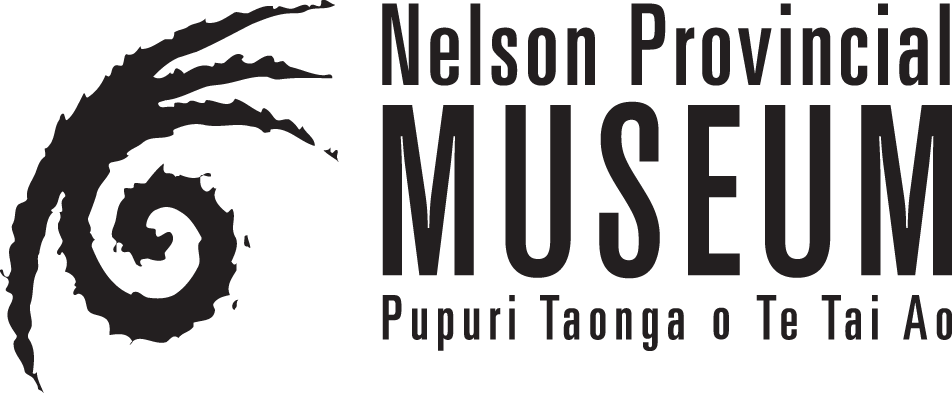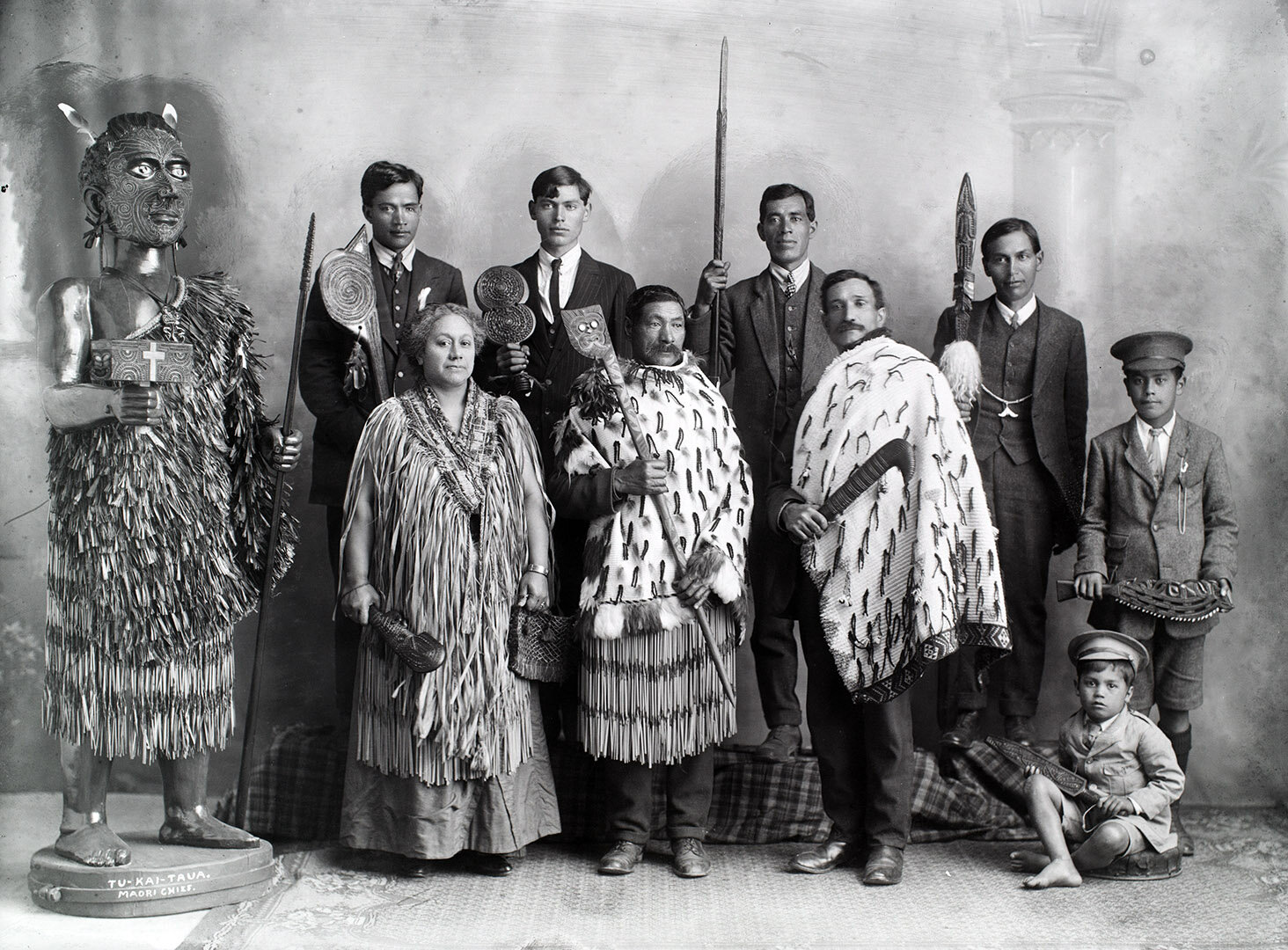Tū Kai Taua – The Devourer of Armies
Ngāti Koata, Ngāti Toa and Ngāti Kuia group, circa 1916. Nelson Provincial Museum, F N Jones Collection: 323355
On 25 October 1916, two cultures came together at a special ceremony held in Whakatū/Nelson to honour and raise funds to support Māori and Pākehā WWI soldiers fighting together on the Western Front.
Local Māori travelled from Whangarae, Matapihi and Rangitoto - Croisilles Harbour and D'Urville Island - to partake in this "unique ceremony", made possible through the efforts of Mr Alexander Wilkie and the Red Cross.
The well-known photographer, Frederick Nelson Jones, was on hand at the Hallenstein Building to capture this moment in history. Using his glass plate camera, Jones captured this image. It shows (from left to right) Hahi Ngamuka Kawharu, Waihaere Wells, Taare Puni Hippolite, Timoti Hippolite, Hura Pakake Hippolite, Riria Wirihana Swainson, Hohaia Te Wera Te Kotua, Hohepa Te Ahu Waihaere Hippolite, Ihakara Hippolite. Together they are representative of all the iwi of Te Tauihu/ Top of the South Island - Ngāti Kuia, Ngāti Koata, Ngāti Apa ki te Rā Tō, Rangitāne, Ngāti Rarua, Ngāti Tama, Ngāti Toa and Te Ātiawa. They are standing beside a carved and painted effigy, each holding a weapon and adorned in a cloak. Following Māori tikanga and kawa - tradition and protocol - the right of naming the effigy was given to Mrs Riria Swainson of Ngāti Raukawa. She chose “Tū Kai Taua,” the devourer of armies.
The effigy was created by Mr Wilkie, a self-taught Pākehā carver; and the painter Mr George Bradley, who worked at Balme and Co, Nelson’s coach building company. Together they created a series of effigies and other works of art that would travel around New Zealand as an exhibition, raising funds for the Red Cross. Tū Kai Taua was especially created by Wilkie and Bradley to represent the tāngata whenua/ indigenous people of Aotearoa/ New Zealand.
Most of Wilkie and Bradley’s effigies depicted Triple Alliance war leaders, such as Kaiser Bill, Crown Prince Wilhelm and Paul von Hindenburg, and were used at “Aunty Sally” events where people paid to throw balls at them.
Tū Kai Taua stood at 193cm in height, adorned in finely woven garments, and a pounamu hei tiki. He held a taiaha in one hand, and a Red Cross donation box in the other.
According to the November 15 1916 issue of The Colonist, "Mrs Swainson then in Māori (interpreted by Archdeacon Grace) made a short speech, expressing the joy she felt at the presence of the white people and her kinsfolk to witness the ceremony, and her joy at the purpose to which the carving was to be placed, the raising of money for the benefit of the Māori and white soldiers in France. The carving was then formally named, and Māoris present sang in their own language the National Anthem..."
“Mr Kotua, Croixelles, in a short speech, expressed his thanks for the invitation to be present, and his delight at the purpose for which the representation of his ancestor was to be used.”
104 years on, this photo is a treasured taonga, both for New Zealand and the many descendants of those tūpuna (ancestors) photographed alongside Tū Kai Taua. The Nelson Provincial Museum recently connected a series of carved weapons and other items in its collections to those pictured in this photograph. However, the whereabouts of the Tū Kai Taua effigy remains unknown.

